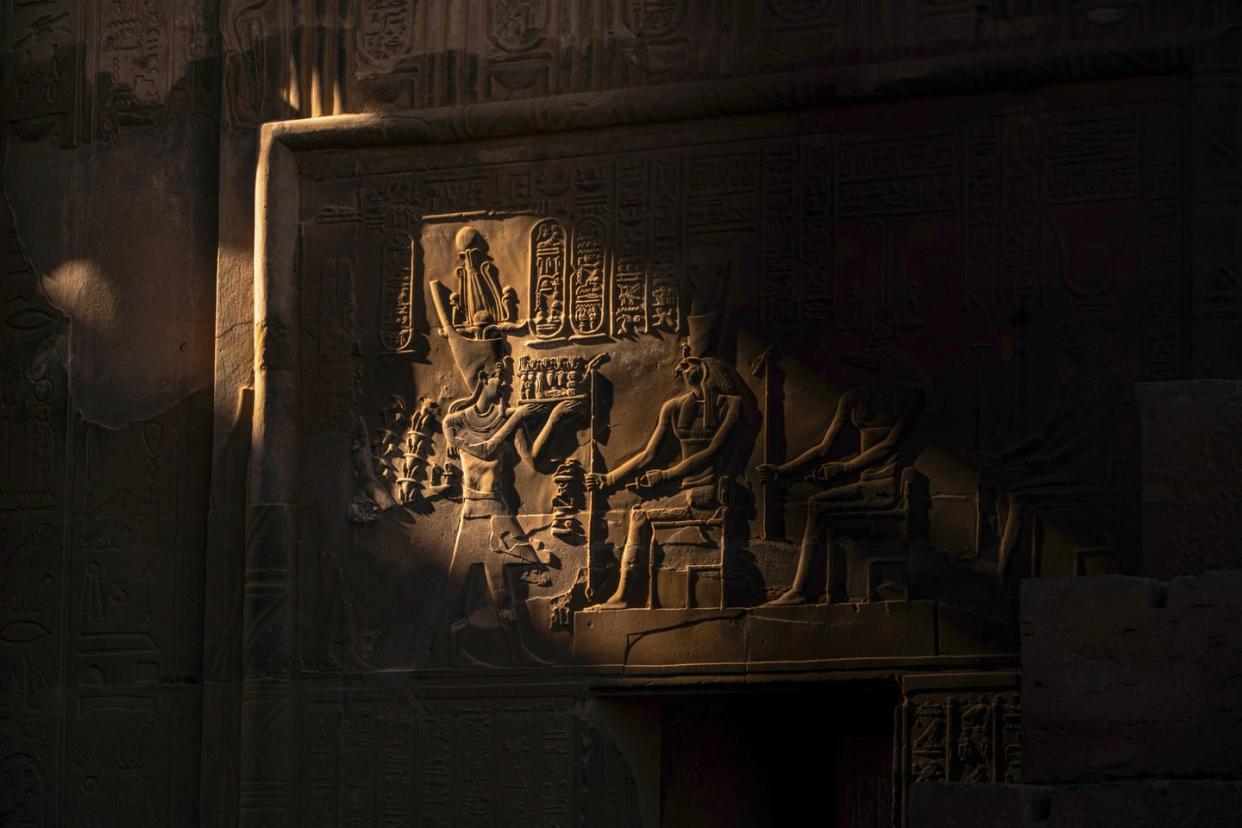63 Ancient Tombs Have Emerged in Egypt, With Long-Lost Treasures and Statues Inside

An archaeological find on the northern coast of Egypt revealed over 60 newfound tombs, some from roughly 2,600 years ago.
The excavation of the tombs found funeral pyres, gold-foil statues and pottery containing a total of 38 bronze coins.
Researchers hope the find can fill out the history of former trade hotbed Damietta.
Archaeologists uncovered more than brick tombs during a recent discovery on the northern coast of Egypt. Within the 63 tombs, many dating back to the Late Period, roughly 664 BC to 525 BC, the team found ancient treasure in the form of bronze coins and gold foil statues.
According to a translated statement from Egypt’s Ministry of Tourism and Antiquities, the town of Damietta was once a thriving hub of trade. Now, in modern times, it continues to unveil that past through its archaeology, the latest wave coming from the all-brick tombs from both the Late Period and the more recent Ptolemaic period that stretched from 323 BC to 30 BC.
Mohamed Ismail Khaled, secretary general of the Supreme Council of Archaeology, said in a translated statement that the tombs are reminiscent of others found in the Late Period, emphasizing the historical significance of the discovery, which can help fill out the knowledge of Damietta and Egypt’s 26th family dynasty during that time.
Within the various tombs, researchers found funeral pyres, pottery, and figurines meant to resemble idols that the Egyptians believed would serve the deceased in the afterlife for eternity.
It was within both the figurines—known as ushabati—and the pottery that the crews found the good stuff. Many of the ushabati statutes, believed to be from the 26th family dynasty which ran from 664 BC to 525 BC, were covered in gold foil, while a vase from a more recent tomb featured 38 bronze coins.
The gold foil highlighted the importance of the Egyptian religious idols, symbolic pieces that often accompanied wealthy in their tombs.
The team also discovered additional coins, these older specimens likely from the Ptolemaic period that began in 323 BC and served as the final dynasty of ancient Egypt before Roman rule.
Syman Ashmawi, head of the Egyptian Archaeological Sector, said in a statement that the mix of both local and imported pottery puts a “spotlight on the trade exchange between Damietta and the cities of the Mediterranean coast.”
You Might Also Like

